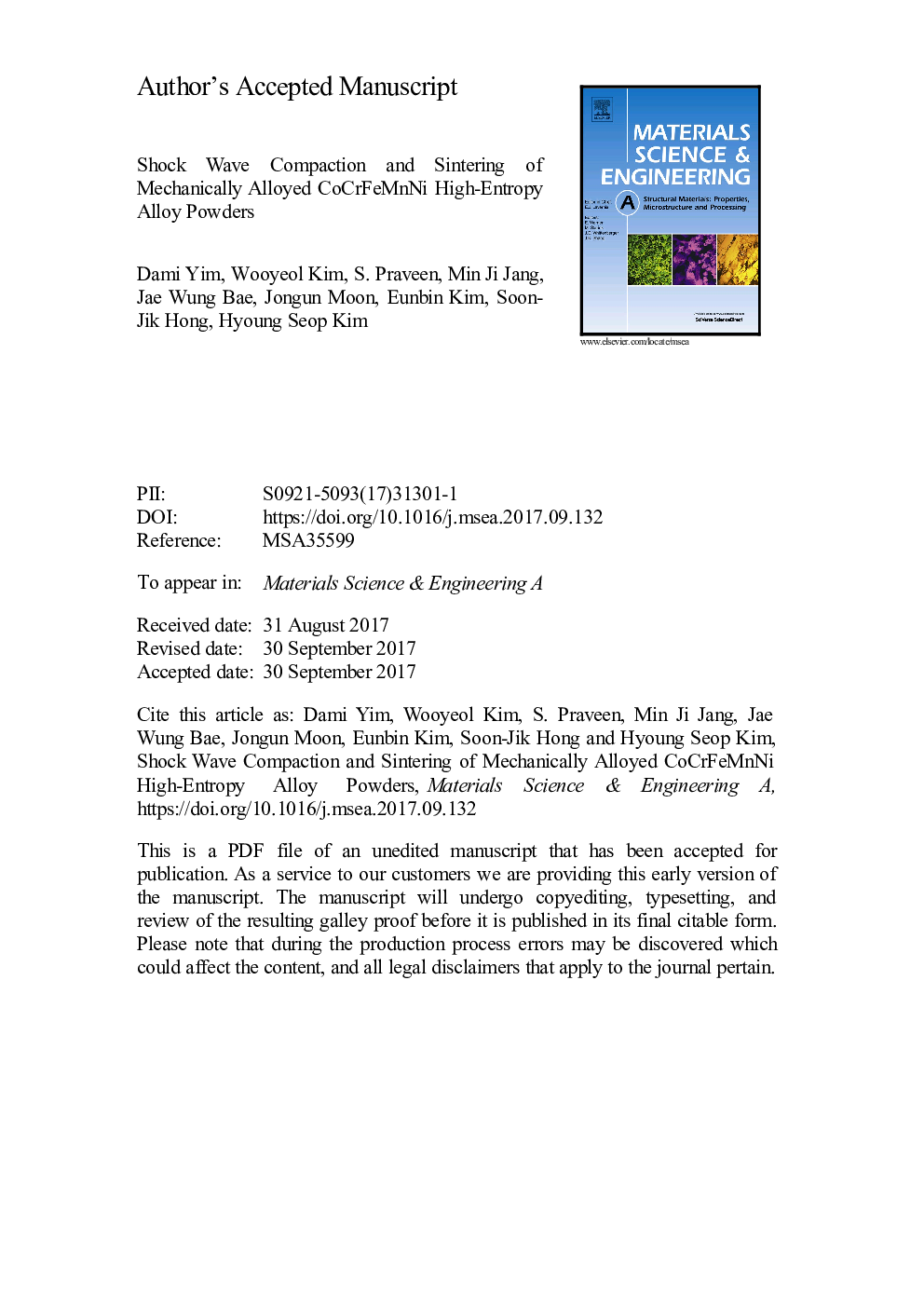| Article ID | Journal | Published Year | Pages | File Type |
|---|---|---|---|---|
| 5455124 | Materials Science and Engineering: A | 2017 | 37 Pages |
Abstract
In this study, mechanically alloyed CoCrFeMnNi high-entropy alloy (HEA) powders were compacted using static and shock wave compaction methods followed by pressureless sintering. The microstructural evolution and the mechanical properties were analyzed using optical microscopy, scanning electron microscopy, finite element method simulations, and tensile tests. The alloy consists of an FCC phase with a minor amount of ZrO2 in the as-milled and sintered condition. The presence of ZrO2 is due to the contamination during milling, and it led to the formation of composite microstructure after sintering. The static compaction of the alloyed powders resulted in an increase in compaction density (~ 85 to 88%) with the increasing pressure (1-3Â GPa), and the shock wave compaction of the alloyed powders resulted in the high relative density (~ 95%) with relatively fine and isolated pores. After sintering, almost full densification (~ 99.5%) with smaller grain size and better mechanical properties was achieved in the shock wave compacted specimens as compared to the sintering of static compacted specimens. The sintered shock wave compacted specimen exhibited high yield strength of ~ 630Â MPa and uniform strain distributions.
Related Topics
Physical Sciences and Engineering
Materials Science
Materials Science (General)
Authors
Dami Yim, Wooyeol Kim, S. Praveen, Min Ji Jang, Jae Wung Bae, Jongun Moon, Eunbin Kim, Soon-Jik Hong, Hyoung Seop Kim,
